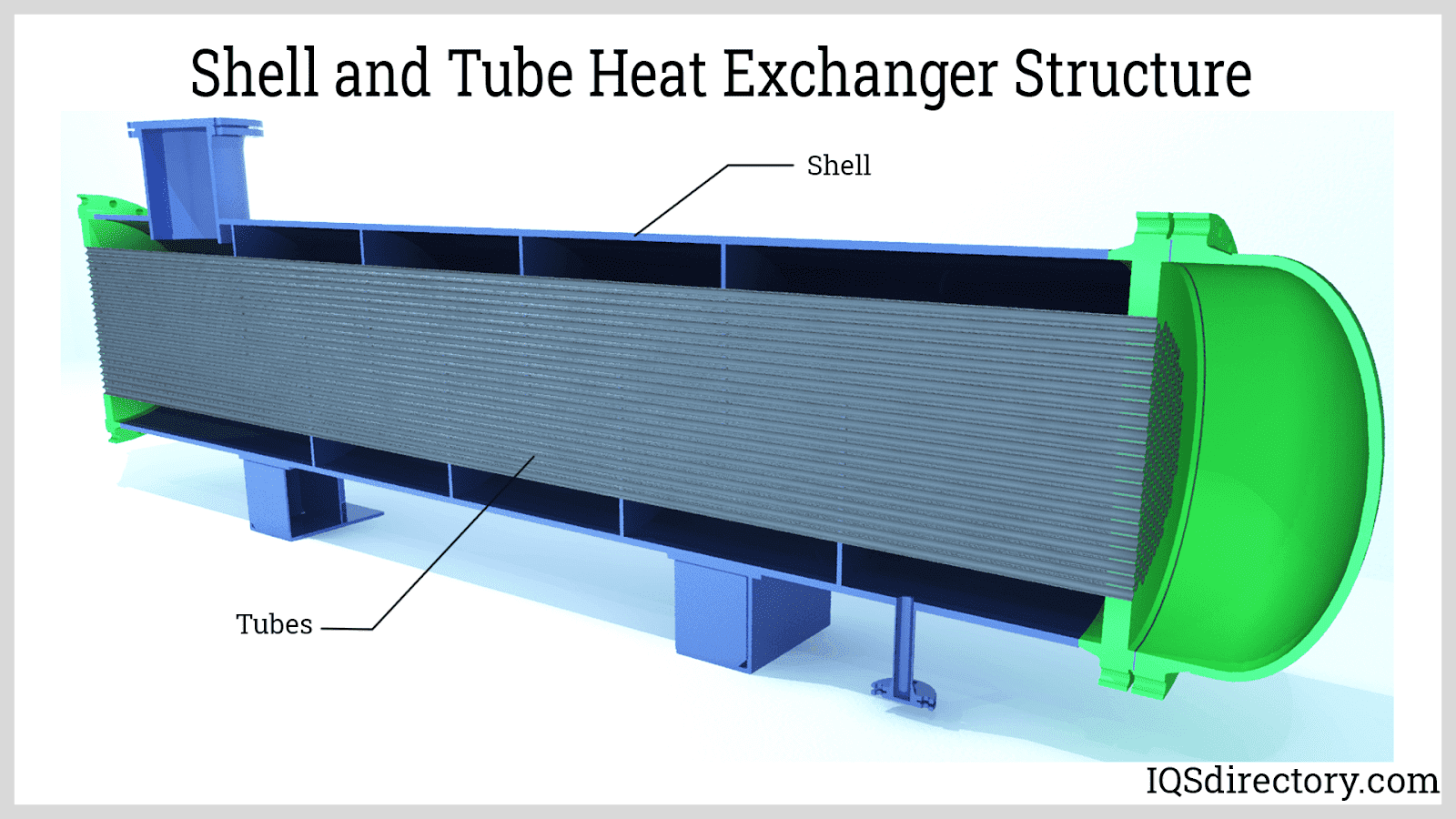Discovering the Conveniences and Applications of Heat Transfer Equipments in Modern Sector
Heat transfer systems play a necessary duty in modern-day sector. They incorporate different systems such as radiation, convection, and conduction, each contributing to efficient thermal monitoring. Industries like production and aerospace advantage considerably from these systems. As improvements proceed, the combination of innovative materials and technologies assures to boost power effectiveness. This advancement increases vital inquiries concerning the future ramifications for sustainability and operational prices throughout several sectors. What exists in advance in this continuous improvement?
Comprehending Heat Transfer Principles
Heat transfer concepts are fundamental to the procedure of numerous industrial systems. These concepts include the mechanisms of radiation, convection, and transmission, each playing a vital duty in handling thermal power. Comprehending transmission includes assessing exactly how Heat relocates via solid products, while convection relate to Heat transfer in fluids, driven by liquid activity. Radiation, unique from the various other two, includes power transfer with electro-magnetic waves. The efficiency of Heat transfer impacts system performance, energy usage, and total productivity. Efficient thermal management is necessary in processes such as Heat, home heating, and air conditioning healing. By grasping these concepts, sectors can optimize their operations, minimize power prices, and boost equipment durability, therefore adding to a more effective and lasting commercial landscape.
Trick Kinds Of Heat Transfer Systems
While various industries use Heat transfer systems for diverse applications, a number of crucial kinds stand out because of their particular functions and efficiencies. The most common types include radiation, convection, and transmission systems. Transmission systems transfer Heat through straight contact in between products, making them reliable in solid-state applications. Convection systems, on the various other hand, use fluid movement to transfer Heat, suitable for home heating or cooling down gases and liquids. Radiation systems operate without a tool, counting on electro-magnetic waves to move Heat, suitable for high-temperature atmospheres. Each kind offers unique purposes, allowing sectors to customize their Heat transfer solutions based on functional needs, energy performance, and cost-effectiveness. Comprehending these systems is crucial for maximizing performance in various commercial settings.
Industrial Applications of Heat Transfer Technologies
The application of Heat transfer modern technologies in market plays a necessary function in boosting energy effectiveness and optimizing procedures. DVS Heat Transfer Systems. By executing advanced Heat exchange systems, companies can substantially minimize their environmental influence while enhancing total efficiency. This integration not just fosters sustainability yet also lines up with modern-day governing and customer demands for greener practices
Power Efficiency Improvements
As markets progressively prioritize sustainability, power efficiency enhancements in Heat transfer innovations have actually become vital for decreasing functional prices and environmental effect. Boosted Heat exchangers, as an example, make use of advanced materials and layouts to maximize thermal performance while lessening power consumption. Integrating variable speed drives in pumping systems enables for much better control of liquid circulation, leading to substantial power savings. The implementation of smart sensors and automation offers real-time tracking, allowing changes that maximize power usage. Furthermore, waste Heat healing systems catch excess thermal power, converting it into functional power. These improvements not only enhance energy efficiency but also contribute to a more sustainable commercial landscape by lowering greenhouse gas exhausts and sustaining compliance with environmental regulations.
Refine Optimization Techniques
Process optimization methods are vital in enhancing the efficiency and performance of Heat transfer innovations in industrial applications. These techniques entail refining processes to optimize Heat transfer performance while minimizing power intake and operational costs. Approaches such as computational fluid dynamics (CFD) modeling enable engineers to examine and mimic Heat transfer circumstances, determining areas for renovation. Furthermore, real-time monitoring systems can give useful data on temperature level gradients and circulation rates, making it possible for adjustments that maximize performance. In addition, carrying out advanced control methods, such as predictive analytics, can improve system responsiveness to varying operational demands. By using these optimization techniques, sectors can achieve higher thermal performance, decreased downtime, and enhanced item high quality, ultimately resulting in raised competitiveness in the market.

Ecological Influence Reduction
While industrial Heat transfer technologies are important for functional performance, their application also presents chances for substantial ecological influence reduction. By enhancing power performance, these systems minimize fuel consumption, resulting in reduced greenhouse gas exhausts. Advanced Heat exchangers can recoup waste Heat, rerouting it to preheat inbound liquids, consequently lowering power needs. Furthermore, the combination of Heat transfer technologies in renewable resource systems, such as solar thermal and geothermal applications, sustains the change to lasting methods. Industries that use these innovations likewise take advantage of decreased operational prices and boosted governing compliance. On the whole, the strategic execution of Heat transfer systems not only bolsters performance yet likewise fosters an extra sustainable industrial landscape, adding to worldwide environmental objectives.
Benefits of Efficient Heat Transfer Solutions
Efficient Heat transfer systems provide substantial benefits in modern sector, mostly through boosted energy efficiency and price reduction. By optimizing thermal administration, these systems minimize power waste, causing lower functional costs (DVS Heat Transfer Systems). Businesses can accomplish greater sustainability and enhanced profitability.

Power Effectiveness Improvements
As markets progressively prioritize sustainability and cost-effectiveness, power effectiveness improvements in Heat transfer systems have arised as an essential emphasis. Enhanced performance in these systems results in reduced power consumption, making it possible for facilities to run more sustainably. By maximizing Heat transfer approaches, markets can decrease waste Heat and achieve much better thermal monitoring, considerably lowering their ecological effect. Breakthroughs in innovations such as Heat exchangers and insulation materials add to boosted performance and integrity. Applying energy-efficient Heat transfer services not just sustains conformity with regulatory requirements yet also fosters a culture of advancement within companies. Ultimately, these improvements are necessary in straightening industrial operations with worldwide power preservation objectives, leading the way for a more sustainable future in manufacturing and processing markets.
Price Decrease Opportunities
By maximizing Heat transfer systems, sectors can disclose significant cost decrease opportunities that enhance their profits. Efficient Heat transfer lowers energy consumption, leading to lower utility costs and minimizing operational expenditures. In addition, enhanced system performance decreases the demand for upkeep and fixings, in addition conserving expenses in time. Improved Heat transfer can additionally expand tools life expectancy, enabling companies to postpone resources expenses on replacements. Moreover, waste Heat recuperation systems can change excess Heat right into useful energy, further driving down prices. These systems not just improve processes yet likewise add to sustainability efforts, positioning companies favorably in a progressively eco-conscious market. On the whole, the financial advantages of efficient Heat transfer systems are considerable and vital for competitive benefit.
Technologies in Heat Transfer Solutions
Just how can contemporary sector improve its procedures with ingenious Heat transfer services? By taking on advanced materials and technologies, markets can substantially enhance thermal performance and performance. Advancements such as nanofluids, which boost Heat transfer capabilities beyond standard fluids, and phase adjustment products that store and launch thermal power, are gaining traction. In addition, the combination of clever sensors and IoT gadgets enables real-time surveillance and optimization of Heat transfer processes, minimizing waste and boosting system responsiveness. Additive manufacturing methods allow the development of even more complicated Heat exchangers that take full advantage of surface location while decreasing product use. Jointly, these innovations drive operational efficiency and create affordable benefits in numerous fields, consisting of production, power, and aerospace.
The Duty of Heat Transfer in Sustainability Initiatives
While the promote sustainability remains to reshape industries, the duty of Heat transfer technologies becomes increasingly essential in attaining ecological goals. Effective Heat transfer systems assist in energy performance by enhancing thermal administration in various procedures, significantly minimizing energy intake and greenhouse gas discharges. As an example, advanced Heat exchangers are used in commercial applications to recover waste Heat, therefore lessening energy waste. In addition, advancements such as phase adjustment materials boost thermal storage, adding to sustainable power integration. The adoption of sustainable liquids in Heat transfer systems can reduce ecological influence. By prioritizing reliable Heat transfer, markets not just enhance operational performance yet also straighten with global sustainability efforts, cultivating a cleaner, more sustainable future.
Regularly Asked Questions
Just How Do Heat Transfer Equipments Influence Power Prices in Manufacturing?
Heat transfer systems significantly affect power costs in manufacturing by boosting performance, decreasing waste, and enhancing thermal monitoring. These improvements result in reduce functional expenditures, inevitably benefiting general performance and profitability in industrial operations.
What Maintenance Is Required for Heat Transfer Solutions?
Upkeep for Heat transfer systems includes normal inspections, cleaning of elements, inspecting fluid levels and conditions, replacing worn parts, and guaranteeing appropriate insulation. These actions improve effectiveness, prolong life expectancy, and stop expensive malfunctions in procedure.
Are There Security Interest In Heat Transfer Systems?
Security concerns with Heat transfer systems include potential leakages, pressure build-up, and DVS Heat Transfer Systems thermal hazards. Appropriate design, routine maintenance, and adherence to safety protocols are necessary to alleviate these risks and assure risk-free procedure in industrial atmospheres.
How Can I Select the Right Heat Transfer System for My Company?
Picking the right Heat transfer system includes examining aspects such as effectiveness, application requirements, budget plan restraints, and safety requirements. A comprehensive evaluation of these components will certainly help ensure ideal performance and dependability in organization procedures.
What Prevail Failures in Heat Transfer Solutions and Their Reasons?

Comprehending transmission involves evaluating exactly how Heat relocates with strong products, while convection pertains to Heat transfer in fluids, driven by fluid motion. By enhancing Heat transfer techniques, sectors can minimize waste Heat and achieve better thermal administration, significantly reducing their ecological effect. Waste Heat healing systems can change excess Heat right into functional power, additionally driving down prices. Progressed Heat exchangers are utilized in industrial applications to reclaim waste Heat, thereby minimizing energy waste. Common failures in Heat transfer systems consist of leakages, rust, and ineffective Heat exchange.